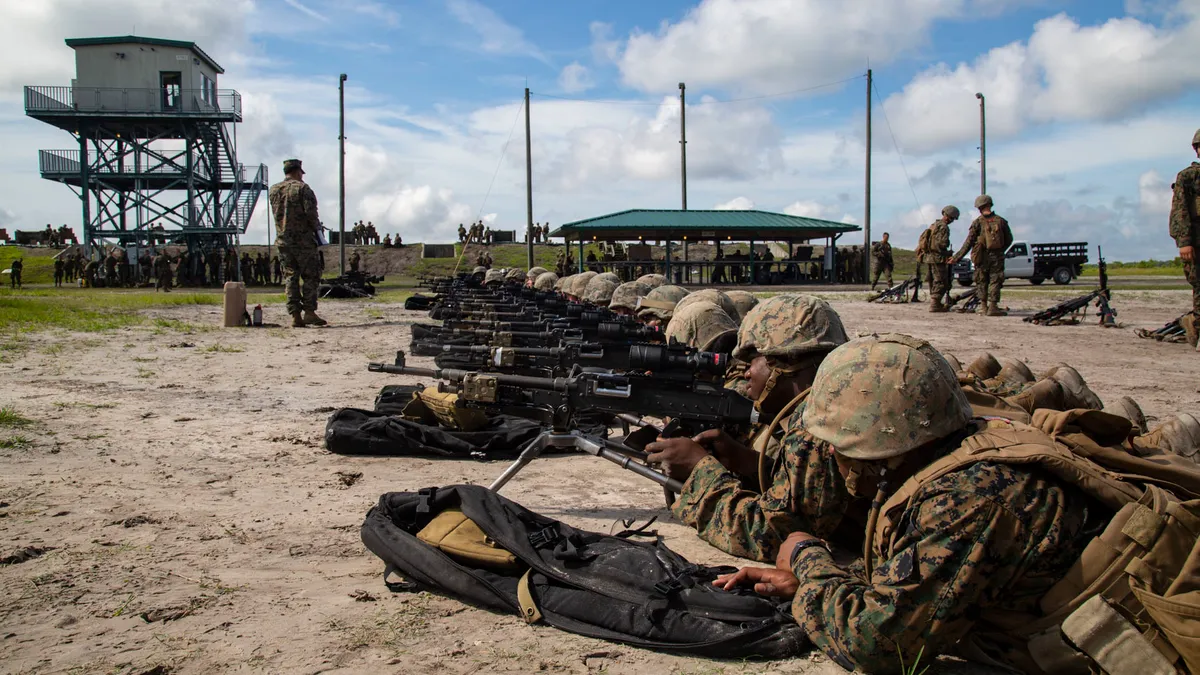Dive Brief:
- September’s Hurricane Florence left behind approximately $3.6 billion of damage at Camp Lejeune in North Carolina, reported the Marine Corps Times.
- That sum takes into account buildings that General Robert B. Neller described as not being "cost effective" to repair because of their age. Roughly 31 structures would be demolished and replaced with new military construction, amounting to $2 billion. Repairs to existing buildings would cost $1.3 billion, said Marine spokesman Major Brian Block. The remaining funds would go toward replacing destroyed IT systems, among other repairs.
- Up to 70% of the base’s homes were damaged and AP News reported nearly 5,000 military personnel and their family members have been displaced. Water and roof damage across many buildings also have resulted in the formation of mold.
Dive Insight:
North Carolina officials estimate Hurricane Florence caused $17 billion of damage in the state. Dave Simpson, president and CEO of the Carolinas Associated General Contractors, told Construction Dive earlier this month that the billions in storm damage on top of an already “booming” construction industry have further aggravated severe workforce shortage.
“You have got a perfect storm where construction was booming, and there were not enough workers,” he said. “And then you throw in a multi-billion-dollar disaster named Florence and that just makes things all the more challenging,” he said.
In October, Class 4 Hurricane Michael all but flattened Tyndall Air Force Base in Panama City, Florida, destroying the docks and marina, razing buildings and damaging jets and other equipment to the tune of hundreds of millions of dollars. Although cleanup will be a long road, as of early December, about 90% of debris removal was complete and 325th Fighter Wing Vice Commander Jefferson Hawkins told the Panama City News Herald the base was doing “really well” and that it had “a lot of assets that the community doesn’t have.” Although nearly all of the facilities will need roof repairs, only 20% may need to be demolished.
Construction stemming from Superstorm Sandy in 2012 still is ongoing. This fall, New Jersey Gov. Phil Murphy announced a $230 million flood control project comprising coastal anti-flood barriers that will protect the waterfront cities of Hoboken, Weehawken and Jersey City. Similarly, Texas has proposed $23 billion to $32 billion of coastal barriers in response to last year’s Hurricane Harvey.
Fourteen years after Hurricane Katrina, New Orleans still is working through repair programs, though progress has stagnated. As of July, a $2.4 billion road and infrastructure repair program that is funded by post-Katrina Federal Emergency Management Administration settlement money was found to have barely made progress. Only 20% of promised projects underway and, as of May, only 1% of available funds had been spent.














